
Lot 168
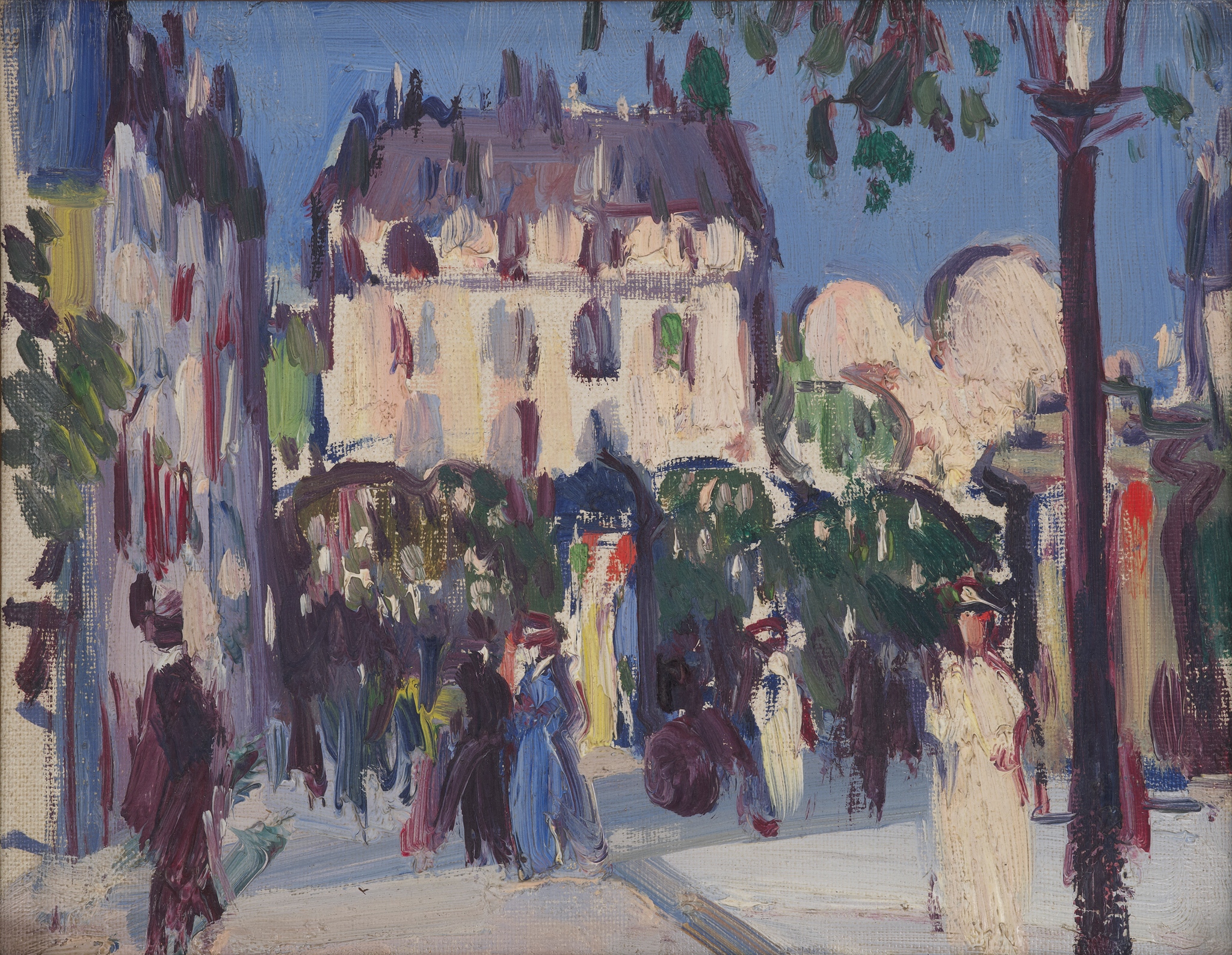
JOHN DUNCAN FERGUSSON R.B.A. (SCOTTISH 1874-1961) §
PLACE DE L’OBSERVATOIRE, 1907
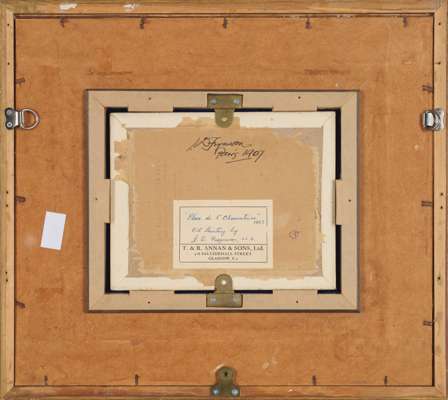
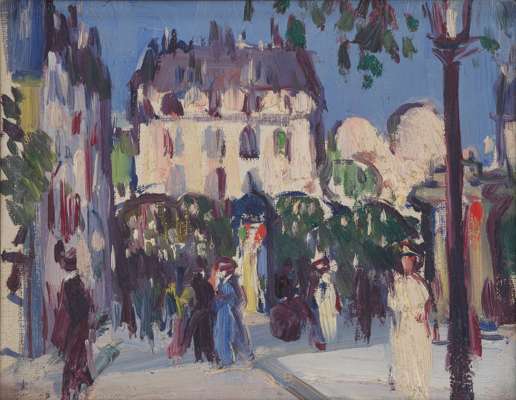
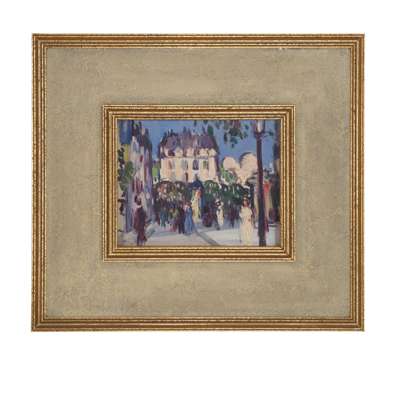



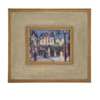

Scottish Paintings & Sculpture
Auction: Evening Sale | Lots 109 to 207 | Thursday 04 December 2025 from 6pm
Description
Signed, inscribed and dated ‘J. D. Fergusson / Paris 1907’ verso, oil on canvas board
Dimensions
19cm x 24cm (7.5in x 9.5in)
Provenance
Dr Jim Thomas Rankin Ritchie (1908-98), Edinburgh and thence by descent to the present owner
On loan to the National Galleries of Scotland, Edinburgh 2001-2025
Exhibited:
Annan Gallery (T. & R. Annan & Sons Ltd), Glasgow, John Duncan Fergusson: Paintings 1898-1957, 7 May – 1 June 1957, no.33, £40
Scottish National Gallery of Modern Art, Edinburgh, The Scottish Colourists: Works from the Dr Ritchie Collection, 27 September 1997 – 11 January 1998, no.16
Scottish National Gallery of Modern Art, Edinburgh, The Intimate Colourist, 27 March - 14 November 2010
Scottish National Gallery of Modern Art, Edinburgh, The Scottish Colourists Series: John Duncan Fergusson, 7 December 2013 – 15 June 2014 and tour to Pallant House Gallery, Chichester, 5 July -19 October 2014
Footnote
Place de l’Observatoire by the Scottish Colourist John Duncan Fergusson is a gem of a painting from a celebrated series of street scenes that he made after moving to Paris in 1907. It formerly belonged to the important collector Dr Jim Thomas Rankin Ritchie (1908-98) of Edinburgh and was on loan to the National Galleries of Scotland from 2001 until 2025.
Born in Leith near Edinburgh, Fergusson settled in the French capital following the start of his relationship with the American artist Anne Estelle Rice (1877-1959). He declared ‘Paris is simply a place of freedom’ and rented a studio in Montparnasse, the renowned artists’ quarter. As seen in Place de l’Observatoire, Fergusson became swept up in the inspiration of Paris’s pre-First World War art world, as he absorbed and evolved the latest developments in the works of artists including Pablo Picasso, André Derain and Henri Matisse. The present work and its fellows were painted spontaneously, in situ, as Fergusson gloried in his new surroundings; those seen here depict an area near the Observatory founded by Louis XIV in 1667 on the Left Bank of the Seine.
Deft brushstrokes outline people, trees, buildings and street furniture, such as the anchoring lamp post on the right of the composition. Highlights of colour including the blue of the full-length dress of the woman at the centre of the image, provide rhythm across the work’s surface. The leaves which enter from the upper right partner with the depth of view realised behind them to create a sophisticated perspective in which buildings are seen from the side as well as straight on, whilst the scene is illuminated throughout by the idyllic blue sky. Passages such as the short strokes of green at the far left and the suggestion of foliage across a mid-vertical, verge on the abstract, revealing Fergusson’s newfound confidence and innovative approach to his work. This was to result in his election as a Sociétaire of the progressive Salon d’Automne in 1909, in recognition of his contribution to the modern movement.
Jim Ritchie was a teacher, writer and film-maker. He began collecting in 1928 when he visited Fergusson’s solo exhibition at Alex. Reid & Lefèvre in Glasgow and purchased several works directly from the artist. Their relationship developed, not least as related in a story enjoyed by friends and family alike about how:
“…having skipped school because of a migraine, his mother hoping that art might allay it, told him of a sale of pictures in Glasgow and he duly attended. When leaving the saleroom with his purchases tucked under his arm, J. D. Fergusson stopped him and asked what he had bought and on seeing all four of his works, remarked, ‘that’s a very good one, that’s a very good one, that’s a very good one, and that’s a very good one’…[Ritchie’s mother]…was more succinct in her remark to her son about his extravagance, ‘for goodness sake, dinnae take another heidache’.” (Margaret Longstaff, ‘Reflections from the Golden City’, Scottish Book Collector, vol. 6, no.8, 1998, p.26)
From this starting point Ritchie amassed a distinguished collection of modern Scottish art, including examples by Fergusson’s fellow Scottish Colourists F. C. B. Cadell and S. J. Peploe and Fergusson’s wife Margaret Morris, as well as many other leading artists of the twentieth-century including John Bellany, Elizabeth Blackadder, Robert Colquhoun, Joan Eardley, William Gillies, Robert MacBryde, William MacTaggart and Robin Philipson.
It is thought that Ritchie acquired Place de l’Observatoire when it was included in Fergusson’s last lifetime solo exhibition, held at the Annan Gallery, Glasgow in 1957. It consisted of 43 paintings, covering the artist’s career from Tandstickers (Toothpicks) of 1898 to the recently completed Fruit and Flowers at ‘La Fauvette’ of 1957. Place de l’Observatoire was number 33 and can be seen in installation photographs of the exhibition, held in the Fergusson Archive of Culture Perth & Kinross. It was presented in a similar, if not the same, frame as it is currently, as part of an arrangement of six paintings, including the related Boulevard Raspail of 1907, A Pink Rose of 1902 and images of Royan and Cassis.
The exhibition was opened by the Right Hon. Lord Boyd Orr of Brechin. In his speech he stated:
“I hope before the end of June most of the paintings will be sold and that people will be feeling happier and healthier at having seen them. I am sure that it is very good for their mental health and can have nothing but continual good for the enjoyment of life.” (Typescript of Speech by the Right Hon. Lord Boyd Orr, Paintings 1898-1957, Fergusson Archive, Culture Perth & Kinross)
The Scotsman’s review of the exhibition described Fergusson as ‘the Scottish doyen of modern art’ and explained:
“For the most part these pictures, which have been brought from the artist’s private collection and have a certain sentimental value, are mainly representational in style…The smaller paintings done in Paris and the South of France before the First World War make a most interesting collection. The harmonious hanging of the show is not chronological in order, but aims at grouping contrasting and kindred subjects that please the eye, and at the same time bring out the artist's love of colour…For the most part the artist has concentrated on joyous reflections of summer days in the city, the country, or at the seaside, and to all of these he imparts his own distinctive personality. The viewer gets to know his style and for confirmation finds the artist's signature on the back of the picture.” (The Scotsman, 7 May 1957)
From 1997 to 1998 the Scottish National Gallery of Modern Art held an exhibition of Scottish Colourist works from Dr Ritchie’s collection. After his death the following year, The Blue Fan by Cadell was bequeathed to the National Galleries of Scotland (acc.no.GMA 4290). Place de l’Observatoire was on long-loan to the Galleries from 2001 until 2025 and was included in many collection displays, including The Intimate Colourist of 2010, as well as the touring Fergusson retrospective exhibition of 2013 to 2014. Other Parisian street scenes from the series can be found in the collections of Culture Perth & Kinross, the Royal Academy of Music, London and Manchester Art Gallery.








